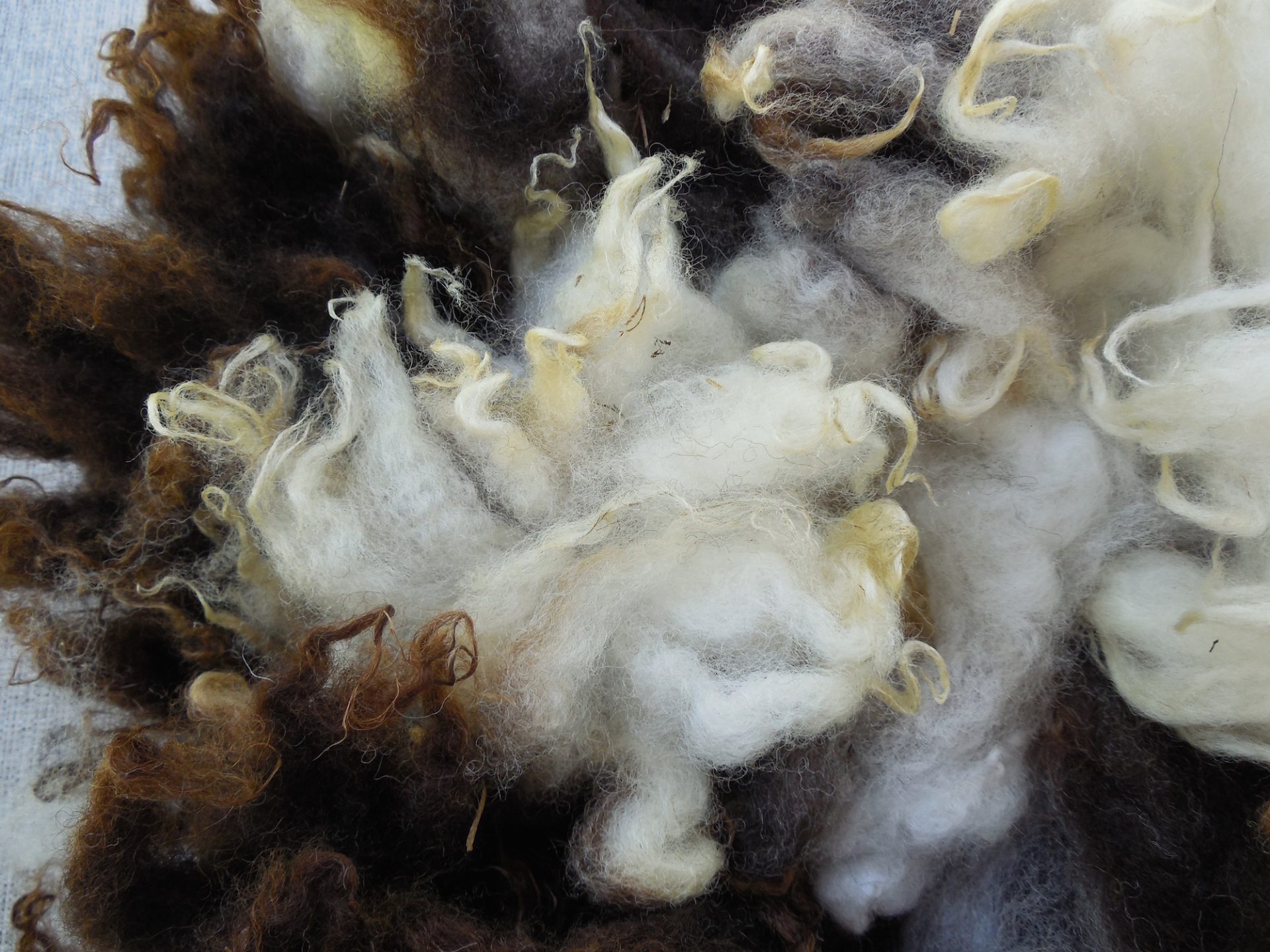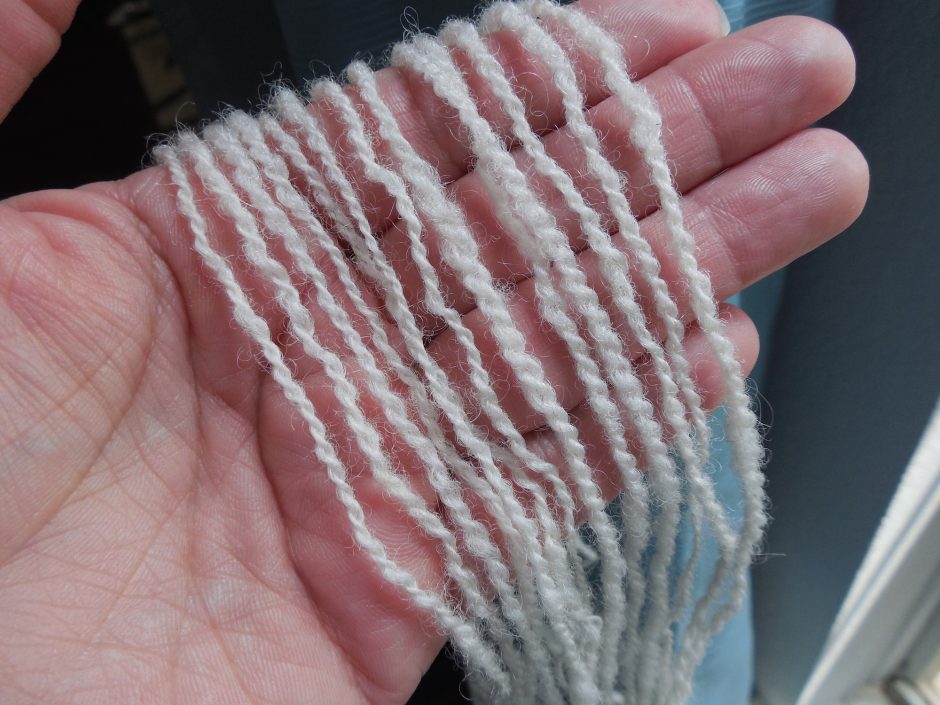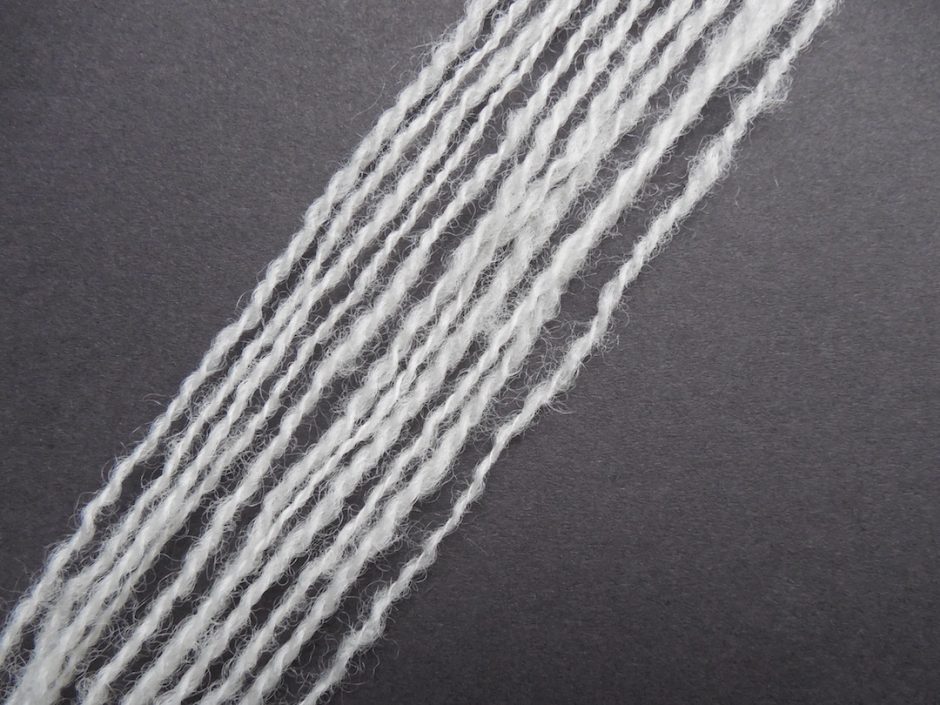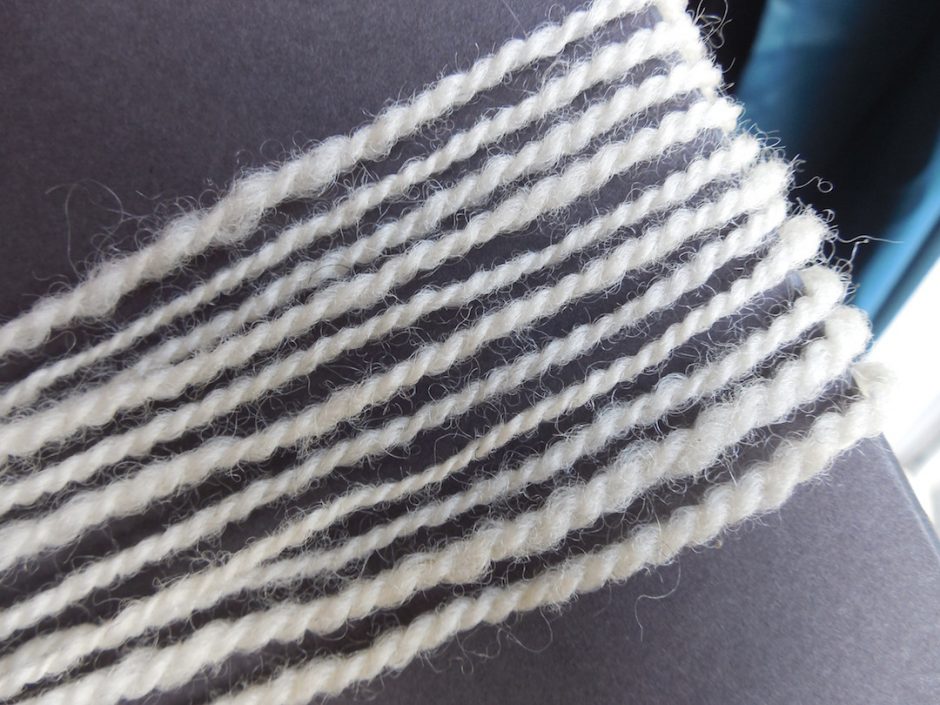All things wool!! All things wool!! If only I had the courage (and time) to go around chanting this in public. Can you imagine me downtown, in front of the congress building, holding up a sign, chanting for change among all the other special topics of the times. Haha, someday… There are many issues to grapple with and figure out. I tend to focus a lot on environmental health. Environmental health directly relates to everything – the health of our animals, our food, a healthy textile industry – it all leads back to our personal well being. I’ve always been a fan of natural. Keeping things simple and as close to natural as possible. It seems almost silly to say out loud. It seems like an obvious choice. But if you take a good look around, it can be quite complicated. I will not attempt to dive into particulars with this simple post. There is much to ponder and much to learn.
As I do my daily work of spinning, washing and hand processing raw fleece, and small making projects, I wonder about being mindful of the things we need and hold off on the things we are told we need. I think of ways to cut back on synthetics of all sorts, especially everyday fabrics and plastics. I wonder if we can grow the culture of making essential clothing and other necessities with our own hands. I wonder how much change could happen if many more of us take a tiny bit more time to seek out natural products made by-hand from small businesses (local or otherwise). I wonder if we could ever grow forward by embracing handmade items for everyday use (not just that one special thing). I wonder, if we do all that (or even some of it), would we guide the way the textile (and food) industry functions, especially in areas like sourcing and waste.
I’m not attempting to make any political statements or start a war on industry. Haha, no, that’s not me. I am but one simple wool loving person. I’ll do my part and maybe a little more given the nature of my small business. I advocate for small change over time. Reverse the process (a lot or a little) of how we got to this point of waste in the world. It is possible to find balance. I’ll start with balance in daily life. I’ll keep working (mostly silently) on wool projects in my “wool office”. Spinning provides me with balance and purpose. What I do, is small, no doubt, but it’s small initiatives, work, joy, appreciation, support that lead to impacting others directly and so many times, indirectly and unexpectedly.
Have you ever come across a fleece that is captivating? It pleases your wool senses. It inspires possibilities. It begs to be handled. You love it so much that, after washing, you diligently check on it every hour or so to see if it’s dry yet. Deep inside you know it’s really just an excuse to gaze upon it’s loveliness just a few more minutes. The hand, the crimp, the color… the everything…too wonderful for words.
So, Jacob… um…well.. Jacob didn’t do that for me. Don’t get me wrong, it’s great. It’s a good breed with good sturdy wool. It just didn’t thrill me like I thought it would. High expectations (and lack of doing my homework) is so often a downfall. I got this nice fleece from a farm in New York. It is a yearling fleece! The staple length is 4 to 5 inches which falls right into the expected 3″ to 7″ range. It washed up nicely with 3 washes and 3 rinses. It has a nice balance of dark and light colored wool being a piebald (white with dark spots).
Jacob’s have medium soft wool. This one is, for the most part, pretty soft, which you would expect from a yearling. After washing, I dug into a section to start getting a feel for the wool, it was riddled with kemp. Ugh, I was confused and a little worried. Visions of limited-use skeins flashed before my eyes. Oh dear!

Further investigation revealed it was just that one little area with kemp. Oh, thank goodness! Regarding kemp, I have since read two different things. One, it’s common for Jacobs to have kemp. Two, another source said there should be little to no kemp. Huh. The length is more than great on this fleece. It ranges from 4″ all the way up to 6″ with the bulk of it in the 5″ range. Another common acceptable Jacob trait is varying lengths of wool on each sheep. Often the darker wool is shorter. Jacob fleece is also know to have a nice open structure and light in the lanolin department. It has a down-like quality even thought it is not double coated. It fluffs up with lots of spring when spun. The micron range for the breed is 26-36.
Oh, I almost forgot, one of the main characteristics is the horns. Jacob are polycerates. They have 2 to 6 horns.
A brief history: These charming small framed sheep come from England where they have been very popular for centuries. Beyond the most recent centuries, it is unclear of the original original decent. Some think maybe the area of Syria. Today there are British Jacobs and American Jacobs. Jacobs were imported to the US during the mid 1900’s.
The British decided to breed Jacobs for an even fleece and larger overall body structure. Jacobs in the US have been breed to enhance the quality of wool but leaving other original characteristics the same.
Jacobs are a Heritage or primitive breed. In the United States, they have been put on The Livestock Conservancy conservation list, currently at a “Threatened” status.
Small batches of washed locks and flicked locks are available in my Etsy shop as of the publishing of this blog entry.

Freshly washed and in progress – Suffolk.
This Suffolk fleece came from Black Sheep Gathering in Albany, Oregon. I grabbed it at the last minute on my final pass through the fleece market. The breed was not marked, but it was dense, fluffy, nice crimp, not terribly dirty, and in my price range considering I just spent a boat load of money at the market and already purchased two other big raw fleeces.
After months, I finally got around to sending a couple of emails to find out exactly what kind of sheep this lovely fleece came from. A very nice coordinator at BSG contacted the ranch where “Bella” resides. Heard back, Suffolk! Suffolk was not on my “learn more about” radar. I hadn’t ever even considered it. I am so glad I grabbed this fleece. I love it.


It was a real pleasure to wash. Most of the dirt came off in a pre-soak. The lanolin came off with one wash. Beautiful fleece with half the wash work! It’s a nice white and has all the characteristics you expect from the breed.
Suffolk is a down breed. This fleece is medium, slightly on the softer side of medium. It cards up wonderfully on the drum carder and hand cards. The first quick sample yarn I spun straight from a lock, separated with my fingers and spun on a wheel (a). I get so eager to test once a fleece is washed and dry! I spun an extra nice lock on a support spindle as well – teased by hand (b), it was easy and nice spinning (note: Don’t judge my sample too much. It was a grab and go situation. Spun to test the wool, not make a perfect yarn.). The last sample, which I just spun up yesterday, is from roving I made on my drum carder (c) and (c2).


I have three small batches (6 ounces each) of this washed fleece in my Etsy shop. Coming up, I’ll have either batts or roving available as well. Feel free to contact me via email if Etsy isn’t your thing.